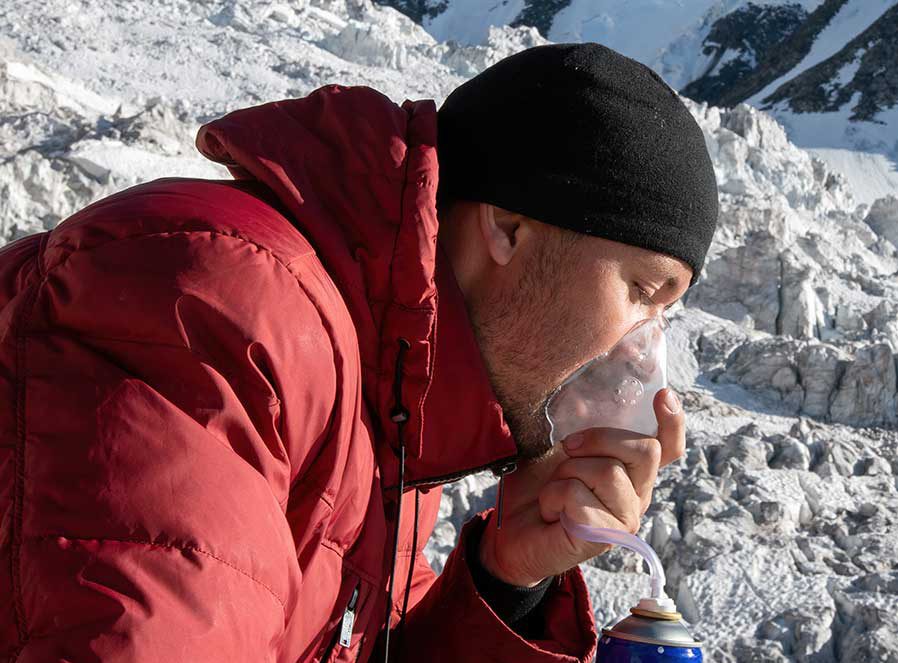Altitude Tips for Mountain Trekking in Nepal
Altitude sickness, also known as acute mountain sickness (AMS), is a condition that can occur when ascending to high altitudes too quickly, where the air pressure and oxygen levels are lower. This condition typically affects individuals ascending above 2,500 meters (8,200 feet) and becomes more prevalent as altitudes increase. Symptoms of altitude sickness can vary in severity and may include headache, nausea, dizziness, fatigue, and shortness of breath. In severe cases, individuals may experience confusion, difficulty walking, and persistent vomiting.

Symptoms of altitude sickness can vary in severity and may include headache, nausea, dizziness, fatigue, and shortness of breath. In severe cases, individuals may experience confusion, difficulty walking, and persistent vomiting.
The primary cause of altitude sickness is the decrease in oxygen levels as altitude increases, leading to hypoxia or inadequate oxygen supply to body tissues. To mitigate the risk of altitude sickness, it’s essential to ascend gradually, allowing the body time to acclimatize to the change in altitude. This involves taking regular breaks, staying hydrated, consuming carbohydrates for energy, and avoiding alcohol and caffeine, which can exacerbate symptoms. Medications such as acetazolamide (Diamox) may also be used as a preventive measure in consultation with a healthcare professional. Before planning your trip to Nepal Himalaya, Better to check The Best Time For Trekking in Nepal
Recognizing the symptoms of altitude sickness and responding promptly by descending to a lower altitude is crucial for managing the condition. While altitude sickness can affect anyone, regardless of age or fitness level, proper preparation, awareness, and adherence to altitude acclimatization techniques can help reduce the risk and ensure a safer and more enjoyable experience when trekking or climbing at high altitudes. Here are some tips to help you prevent and manage altitude sickness while trekking in Nepal:
- Gradual Acclimatization: Ascend gradually to higher altitudes, allowing your body time to adjust to the decrease in oxygen levels. A general rule is not to ascend more than 300-500 meters (about 1,000 to 1,600 feet) per day once you’re above 3,000 meters (9,800 feet).
- Stay Hydrated: Drink plenty of fluids, preferably water, to stay hydrated. Avoid alcohol and caffeine, as they can dehydrate you and exacerbate altitude sickness symptoms. Altitude Tips Altitude Tips Altitude Tips
- Eat Carbohydrates: Consume foods rich in carbohydrates to provide your body with the energy it needs at higher altitudes.
- Rest and Relaxation: Take breaks frequently while trekking to rest and allow your body to adjust. Avoid overexertion and listen to your body’s signals. Altitude Tips, Altitude Tips, Altitude Tips, Altitude Tips
- Medications: Consider taking acetazolamide (Diamox) as a preventive measure against altitude sickness. However, consult with a healthcare professional before taking any medication, as it may not be suitable for everyone.
- Recognize Symptoms: Be aware of the symptoms of altitude sickness, which may include headache, nausea, dizziness, fatigue, and shortness of breath. If you experience any of these symptoms, descend to a lower altitude immediately.
- Sleep at Lower Altitudes: If possible, sleep at a lower altitude than the highest point you reached during the day. This can help alleviate symptoms and aid in acclimatization.
- Stay Warm: Dress in layers to stay warm, especially at higher altitudes where temperatures can drop significantly. Hypothermia can worsen altitude sickness symptoms.
- Monitor Oxygen Levels: Consider carrying a portable oxygen saturation monitor (pulse oximeter) to periodically check your oxygen levels. However, remember that symptoms are a better indicator of altitude sickness than oxygen saturation levels alone.
- Seek Medical Help if Necessary: If symptoms worsen or if you experience severe symptoms such as confusion, difficulty walking, or persistent vomiting, descend immediately and seek medical help.
Remember that altitude sickness can affect anyone, regardless of age or fitness level. It’s crucial to prioritize your health and safety while trekking in high-altitude environments.









I have read so many articles or reviews regarding the blogger lovers except this paragraph is truly a fastidious piece of writing, keep it up.